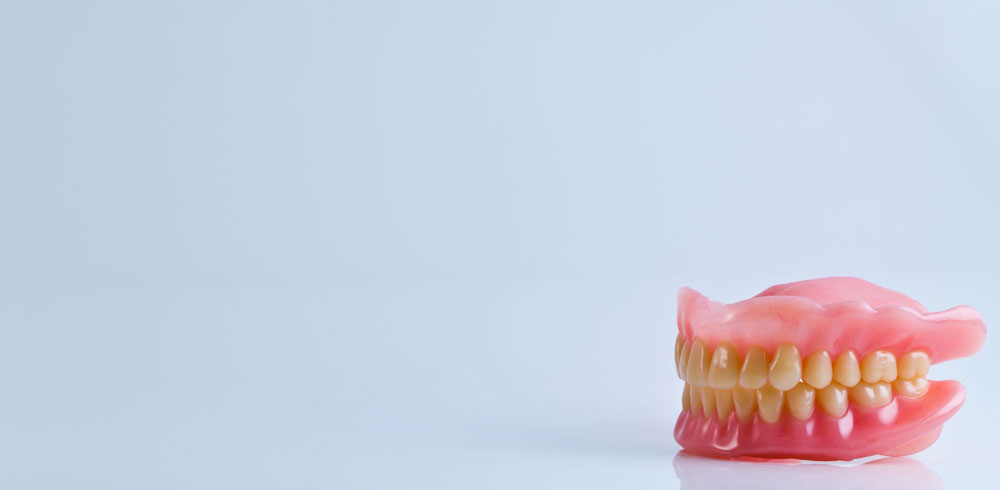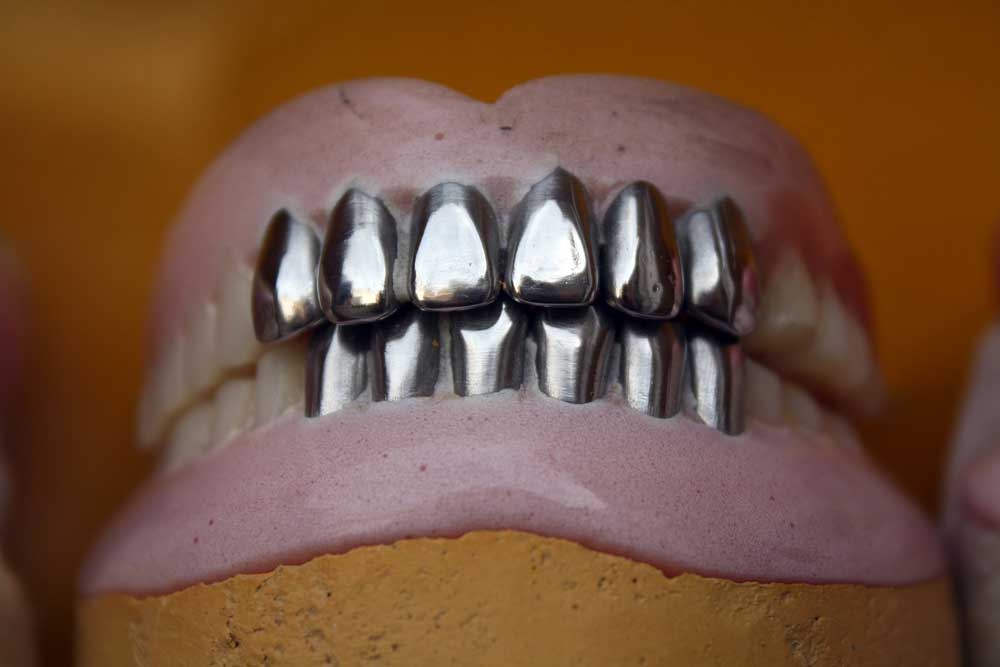Dental crowns are a relatively new innovation in the world of cosmetic dentistry . Simply put, they are a “cap” made of dental ceramic (also called composite resin) that is placed over the top of a prepared tooth. Dental crowns are used to enhance and strengthen irreparably damaged teeth, but most dental procedures attract a lot of fear , and despite the commonality of dental crowns, few people actually understand what is involved in getting one, or in caring for it once you have it. If you are looking at getting dental crown treatment, and have questions regarding its costs, what the procedure entails, why it’s done and how to care for your crowns, then read on andall your questions will be answered.
Where Did Dental Crowns Come From?
Dentistry, as a study, began around 5000 BC, when the Sumerians began developing theories and dictating causes around common dental problems . The most famous of these was the “dental worm”, which was attributed to tooth decay. Both Aristotle and Hippocrates have written about the fabled “dental worm”. The dental crown was first invented around 200 AD by the Etruscans of Italy, who used gold and other metals to create a cap to fit over a damaged tooth, usually due to decay or surgery. Professional dentists weren’t seen until medieval China, and dental surgery was first written about in Ambroise Pare’s book Complete Worksby the end of the 1500s. The dental profession started to see a boom in popularity in the 18th century. Ceramics were first used in dentistry in 1800, and a porcelain “jacket crown” was invented in the early 1900s by Charles H. Land. This crown was used until the 1950s,when the design was improved by E.B. Paulding. This “jacket crown” was effective, but was highly susceptible to micro cracksthat formed during the cooling process of manufacture. The 1950s saw the use of zinc phosphate crowns, but these failed often. In the 1990s the first crown without a metal base was invented. Since then however, crowns have been made out of a material called Polymethylmethacylite– otherwise known as dental ceramic, dental porcelain, or composite resin. It is strong, durable, significantly hard, inert (non-toxic/non-odorous), cheap, and easy to manufacture and use.
The Dental Crown Process
The dental crown procedure is one of many procedures that contains little to no pain. Crowns are installed when a tooth is weak, if teeth need a bridge, or if teeth are irreparably damaged. The dental crown process involves two visits to your dentist. On the first visit, your teeth will be examined to make sure that a crown is the best possible solution for you. After thisthe tooth, or teeth, will be filed down with the use of a drill in preparation for the crown. Once this has been done, the dentist takes an impression of the teeth using a device that the patient bites down on, leaving a mould of their bite. Once this has been done, the patient has a temporary crown or bridge fitted, and the impression is sent to a dental laboratory. At the lab, the technicians use the impression to custom craft the appropriate bridge or crown so that it can fit properly in the mouth and look good among the other teeth. This can generally take a day or two. Once the crown is completed, it will be sent to the dentist, where the second visit will be arranged. On the second visit, the temporary crown will be removed and the permanent one will be fitted, and the patient’s bite tested. If the tests show that the crown is a bad fit, it will be sent back to the laboratory for adjustments. If it is a good fit (which it is the vast majority of the time), then it will be permanently fitted to the patient’s prepared tooth. If you are getting a bridge (which is two crowns with a false tooth or “pontic” suspended between them, used to fully replace a missing tooth ), the dental crown process is much the same.
The Cost Of A Crown
 The process of diagnosing how appropriate a crown is, preparing the area for the crown, creating it, and fitting it is a procedure that takes a lot of work, and while your insurance may cover a portion of the dental crown cost, it is still important to know how much you may be charged for the service. This largely depends on what kind of crown or bridge you are getting, the dental crown costs of which are listed below[1]:
The process of diagnosing how appropriate a crown is, preparing the area for the crown, creating it, and fitting it is a procedure that takes a lot of work, and while your insurance may cover a portion of the dental crown cost, it is still important to know how much you may be charged for the service. This largely depends on what kind of crown or bridge you are getting, the dental crown costs of which are listed below[1]:
Crown
Restoration Incisal Corner-Per Corner= $90-$156 Full Crown – Veneered – Indirect= $1590-$1945 Preliminary Restoration for Crown – Direct= $239-$375 Total= $1919-$2976
Crown and Bridge, 2 Tooth Cantilever Bridge (to Replace Front Teeth)
Pin Retention – Per Pin = $25-$55 Restoration Incisal Corner-Per Corner= $160-$304 Full Crown – Veneered – Indirect= $1518-$1944 Preliminary Restoration for Crown – Direct= $218-$375 Bridge Pontic – Indirect – Per Pontic =$1200-$1725 Total= $3131-$4403
Crown and Bridge, 3 Tooth Posterior Bridge
Pin Retention – Per Pin= $35-$55 Cusp Capping – Per Cusp= $304-$480 Full Crown – Veneered – Indirect= $3035-$3888 Preliminary Restoration for Crown – Direct= $436-$750 Bridge Pontic – Indirect – Per Pontic =$1200-$1725 Total= $6010-$6898
Types of Crowns
There are many types of permanent crowns to suit multiple patients and their requirements.
All Metal Crowns
 These crowns are referred to as an ITEM 618 on treatment plans and invoicing. These are the strongest type of crowns available, as they are 100% metal. All metal crowns don’t need as much tooth structure to be affixed to, as they can be manufactured in a very thin layer due to their natural strength, solidness, and robustness. They rarely chip, fracture, break, and don’t wear down the teeth that they bite against. All metal crowns are not made of pure metals, but rather from metal alloys adding to their strength and suitability for dental treatments.
These crowns are referred to as an ITEM 618 on treatment plans and invoicing. These are the strongest type of crowns available, as they are 100% metal. All metal crowns don’t need as much tooth structure to be affixed to, as they can be manufactured in a very thin layer due to their natural strength, solidness, and robustness. They rarely chip, fracture, break, and don’t wear down the teeth that they bite against. All metal crowns are not made of pure metals, but rather from metal alloys adding to their strength and suitability for dental treatments.
All Ceramic or All Porcelain Crowns
Referred to as an ITEM 613, these crowns are made entirely out of ceramic material. “All Ceramic” crowns are defined as all the different types of ceramic crowns, where “all porcelain” describes particular types of ceramic crowns made specifically out of porcelain. While they look more natural, they require more tooth structure to be removed in preparation, and also wear down opposing teeth more than metal and resin crowns.
PFM (Porcelain Fused to Metal) Crowns
PFM crowns are developed as a metal base with porcelain layered over and bonded to the metal. They are incredibly strong and have terrific aesthetics, but over time as the gums recede, they can reveal their metal base, and the porcelain used is quite abrasive and can wear down the opposing teeth. The major risk with PFM crowns, however, is that the porcelain can crack or chip, exposing the metal base underneath.
Stainless Steel Crowns
Written up as an ITEM 576 on treatment plans and invoices, these are primarily used as a temporary treatment measure to protect the tooth or filling until the permanent crown has been created. They are used commonly for baby teeth in children , with the crown fitting over a prepared baby tooth and protecting it from decay. Eventuallythe tooth will fall out to make way for the adult tooth, taking the crown with it.
All Resin Crowns
On treatment plans and invoices, an All Resin Crown will be listed as ITEM 611, and means exactly what the name suggests – the crown is made entirely out of composite resin. They are mostly used as temporary crowns until the permanent crown is manufactured. The reason for this is that resin crowns wear down over a long period of time and don’t withstand the force of biting and chewing very well. They are also vulnerable to fractures and require a large part of tooth structure to be removed if being placed as a permanent option.
Post and Core Crowns
In cases of extreme decay, facture, or the loss of a previous filling, a Post and Core crown may be necessary. This is where a metal post is placed into the root canal, where it is then filled with core material. The core is then shaped to fit the crown, which is then affixed to the core. This procedure is painless, as it usually follows immediately after a root canal procedure, where there is nothing to hurt – or if the tooth is totally dead, in which case nothing can be felt.
Caring for Your Crown
With the hefty cost of dental crowns, they can prove to be an investment that will be with you for a long time, but as with all things it will last longer if better care is taken of it. With the two types of crown that you will be fitted with (temporary and permanent), it is important to know how to best take care of both of them.
Temporary Crowns
With temporary crowns, these are designed to protect a prepared tooth for the duration of time until you get the permanent crown installed. They are not designed to be treated the same way as permanent crowns and are more susceptible to breakage if not looked after properly. To this end, it is best to avoid any sticky, hard, or crunchy foods. These can dislodge or move the crown, or in extreme cases, even cause it to break.
Permanent Crowns
With permanent crowns, however, it is much simpler. They don’t require the amount of care that a temporary crown does and can be used to eastregular foods. Yet, as mentioned above, good care can only increase the life of your crown, even up to 15 years!
Brushing and Flossing
After the crown is initially installed, it pays to be cautious for a while. Your gums may be sensitive immediately after the treatment. It is recommended you use a tooth brushwith soft bristles and toothpaste made for sensitive teeth. After the initial period after your procedure, regular brushing and flossing can resume, but an electric toothbrush is recommended to increase the effectiveness and precision of your cleaning. Flossing is also encouraged, at least once per day, but care must be taken around the crown area. It is important to floss gently where you have had your crown put in. It is also recommended that you rinse your mouth after meals with an anti-bacterial mouthwash, as crowns prevent damage to the underlying tooth, but make no guarantees against gum decay or disease. It is important to maintain a regular, daily oral hygiene routine, and make regular preventative appointments to your dentist Collingwood for check-ups and cleans.
Call ProSmiles Complete Health Dentistry Today!
If you think that you need a crown, or would like to schedule to have one fitted, feel free to contactProSmiles Complete Health Dentistry by calling (03) 9417 6355 or email us on info@prosmiles.com.au We will more than happily answer any questions you may have regarding our practices and your treatment. These figures were gained from the ADA (Australian Dental Association) annual dental survey conducted on October 2016.
